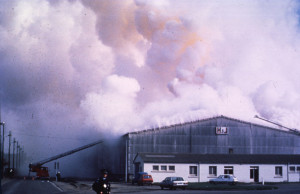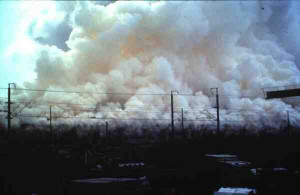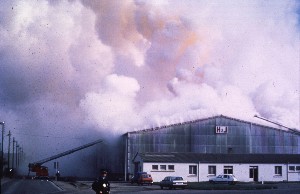At a warehouse storing unknown contents, the self-sustaining decomposition of a stockpile of 850 tonnes of fertiliser NPK 15-8-22 delivered five days earlier caused the formation of a cloud 10 km long heading westward; in this cloud, the presence of nitric acid and chlorine were detected.
The ORSEC plan for dealing with crises was activated; 200 fire-fighters, 627 police officers , 489 gendarme officers, 356 soldiers, 200 emergency responders and over 1,000 municipal employees were mobilised. An extensive evacuation plan spanning 7 municipalities located downwind of the warehouse was implemented. The incident was eventually controlled after 7 hours of emergency intervention.
The human toll amounted to 3 intoxicated employees, one of whom was placed in 24-hour observation at the hospital. Even though the overall evacuation measure applied to a population of 70,000, the actual number of individuals moved for a period of 9 hours during the crisis was evaluated at 38,000. The LOIRE River was only minimally polluted considering the widespread dilution of fire-fighting water.
As a result of both their transport conditions (in the hold of a ship that had previously stored wheat) and storage conditions (on a bed of sawdust), the fertilisers responsible for this accident were placed in close contact with organic matter, whose concentration at certain spots could have been quite high. Moreover, the site’s obsolete electrical installation was partially to blame. The combustion zone began at a point directly aligned with the electrical cables that were dangling underneath the aboveground system for handling stored substances; the cut ends of these cables were probably buried in the mass of fertiliser. Under these conditions, ignition was likely initiated in the depths of the fertiliser pile, immediately adjacent to both the mass contaminated by sawdust and the buried electrical conductors. The fire then spread by means of self-sustaining decomposition of the fertilisers.
This accident still would not have reached such proportions had an efficient response been organised as of the initial detection of heat accumulation.
Download the detailed report in .pdf format (971 Kb)






